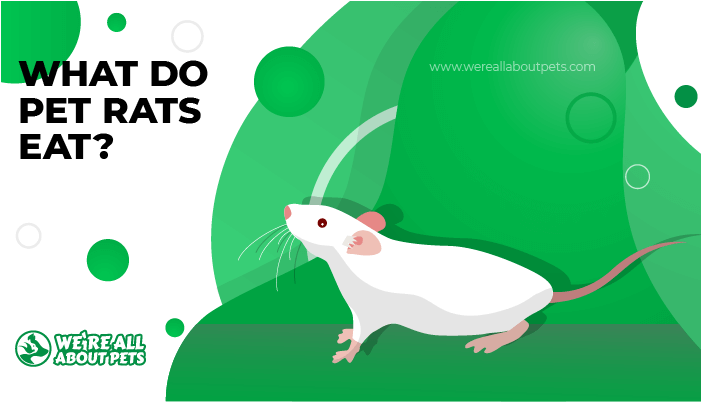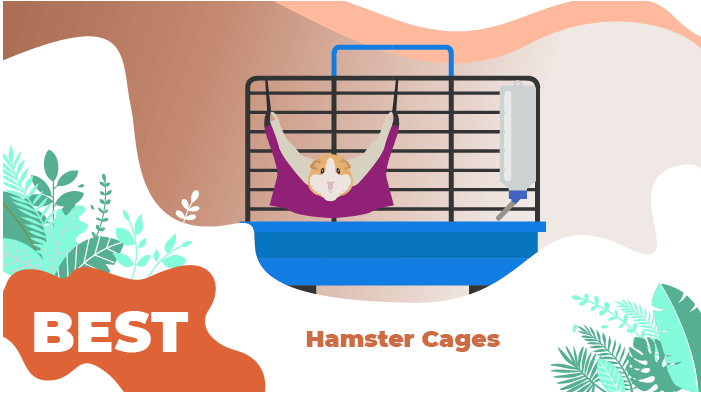11 AdorableTypes of Hedgehogs You Should Know
This page contains affiliate links. We may earn money or products from the companies mentioned in this post through our independently chosen links, which earn us a commission. Learn More
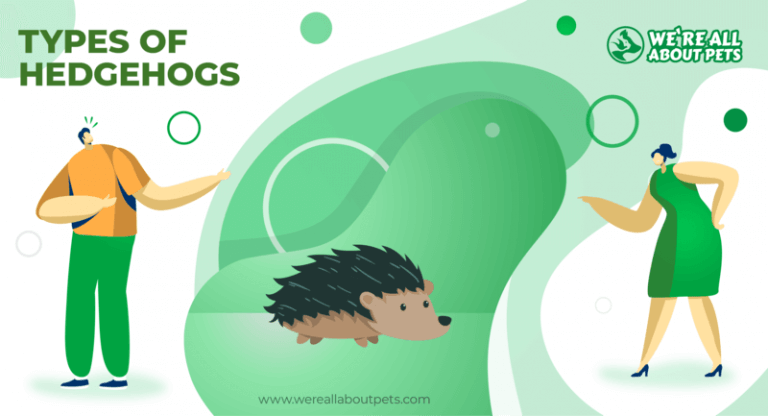
When you think of a cute and cuddly little pet, you probably don’t picture one with spines. Though the hedgehog may be covered in spikes, these small mammals actually make wonderful pets.
No pet is quite like the hedgehog and these little animals can be quite entertaining. That being said, there are certainly some challenges involved in properly caring for a hedgehog. Hedgehogs are nocturnal and they have a specific diet, so they may not be the best choice for inexperienced pet owners. If you’re up to the challenge, however, it’s well worth the effort!
Most of the hedgehogs in the pet trade are from a single species: the African Pygmy Hedgehog. There are, however, a number of different types you may come across in your research.
11 Types of Pet Hedgehog
The hedgehog is a spiny little animal belonging to the subfamily Erinaceinae. There are seventeen different hedgehog species divided among 5 genera, found throughout Europe, Africa, Asia, and New Zealand. There are no native species in Australia or the Americas.
Hedgehogs are distantly related to shrews as you can tell by their elongated snouts, but what really makes them unique is their spines. The spines of a hedgehog are actually hollow hairs comprised of stiff keratin – they are not poisoned or barbed and they don’t detach like the quills of porcupines.
Here’s a quick overview of some of the types of hedgehogs:
1. African Pygmy Hedgehog
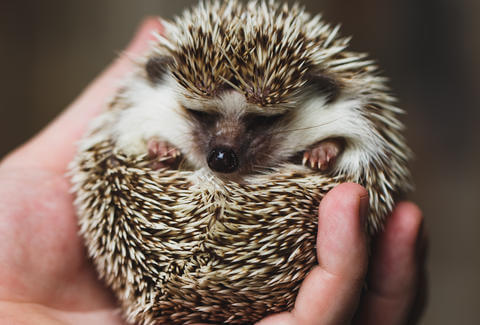
- Origin: Hybrid
- Price: $150 to $300
- Size: 5 to 8 inches
- Color: Varied
The most common species of hedgehog kept as a pet is actually a hybrid of two species. The African pygmy hedgehog is a domesticated species created by breeding the white-bellied hedgehog or the four-toed hedgehog with the North African hedgehog or Algerian hedgehog. These hedgehogs only grow 5 to 8 inches long and weigh up to 1 ½ pounds at maturity. They have an expected lifespan of 3 to 6 years.
2. European Hedgehog (Erinaceus europaeus)
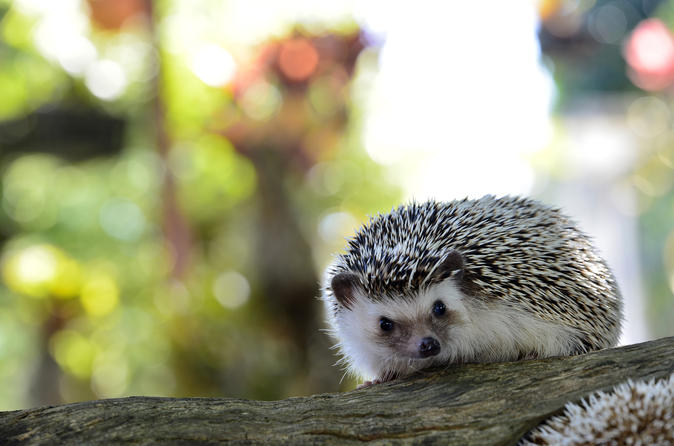
- Origin: Europe
- Price: $150 to $300
- Size: Up to 10 inches
- Color: Brown
Also known as the common hedgehog or West European hedgehog, this species is native to Europe where it can be found from Italy and Iberia north into Scandinavia. The European hedgehog is often found in European gardens where it feeds on a variety of pests. This species is nocturnal and omnivorous with an average life expectancy of about 3 years in the wild.
3. Four-Toed Hedgehog (Atelerix albiventris)
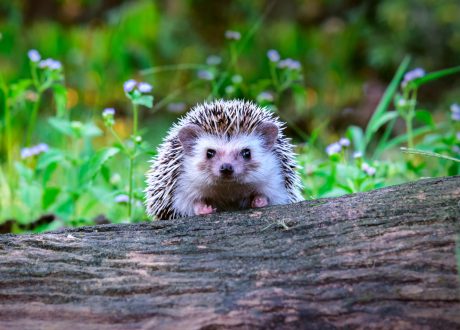
- Origin: Africa
- Price: $150 to $300
- Size: Up to 12 inches
- Color: Brown, grey
Native to central and eastern Africa, the four-toed hedgehog is typically found in savannah and cropland habitats. These hedgehogs are named for the number of toes on their hind legs. This species is fairly large, growing up to 12 inches long with females typically being larger than males. Four-toed hedgehogs vary widely in color but are usually brown or grey with white or cream-colored tips to their spines.
4. North African Hedgehog (Atelerix algirus)
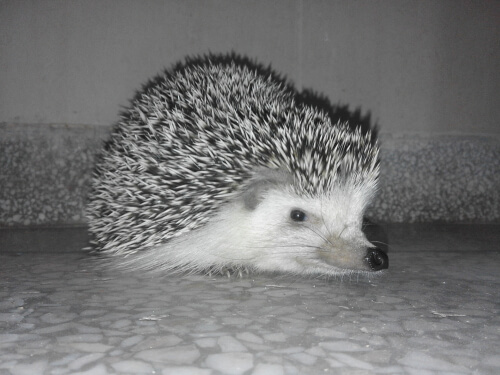
- Origin: Africa
- Price: $150 to $300
- Size: Up to 10 inches
- Color: Brown, white
Also known as the Algerian hedgehog, the North African hedgehog is native to Algeria, Malta, Morocco, Libya, Spain, and Tunisia. Though this species was used to create the domesticated African pygmy hedgehog, little is known about it. It may have been introduced to Africa, a theory some researchers suggest because it is the only one of the four African hedgehog species that is found outside Africa.
5. Desert Hedgehog (Paraechinus aethiopicus)
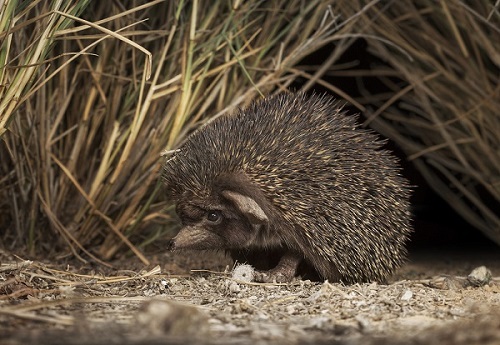
- Origin: Africa
- Price: $150 to $300
- Size: Up to 11 inches
- Color: Brown
The desert hedgehog can be found throughout the Sahara Desert and in parts of Algeria, Egypt, Iran, Iraq, Saudi Arabia, and more. This species grows 5.5 to 11 inches long and weighs up to 18 ounces at maturity. Desert hedgehogs are similar in coloration to the four-toed hedgehog but can usually be identified by their dark muzzles.
6. Long-Eared Hedgehog (Hemiechinus auritus)
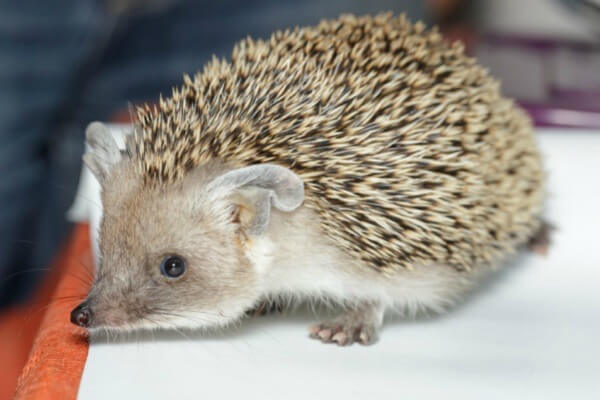
- Origin: Central Asia
- Price: $150 to $300
- Size: Up to 8 inches
- Color: Brown, white
The long-eared hedgehog is native to Central Asia and can be found in a number of countries throughout the Middle East. It is the smallest of the Middle Eastern hedgehogs, growing up to about 8 inches in length. As you can imagine, this species is named for its long ears which are used for heat radiation in the desert. These hedgehogs are unique in that they will often try to outrun predators instead of just curling up into a ball.
7. Indian Hedgehog (Paraechinus micropus)
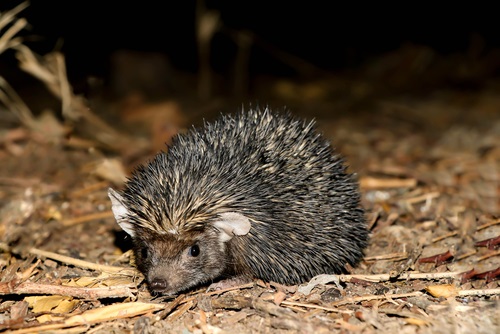
- Origin: India, Pakistan
- Price: $150 to $300
- Size: Up to 7 inches
- Color: Brown
The Indian hedgehog is typically found in sandy desert areas in its native habitat in Pakistan and India. This species is unique from other hedgehogs for its masked face that makes it look almost like a spiked racoon. Indian hedgehogs are fairly small, and they can run very quickly, though they are not as fast as the long-eared hedgehog. This species is largely brown in color with some lighter shading.
8. Somali Hedgehog (Atelerix sclateri)
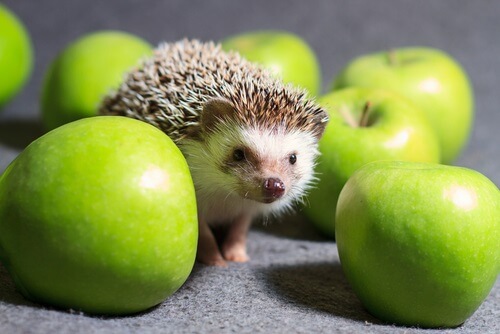
- Origin: Somalia
- Price: $150 to $300
- Size: Up to 5 inches
- Color: Brown
As suggested by the name, the Somalian hedgehog is endemic to Somalia. This species typically inhabits the savanna and other open habitats. Other that its preferred habitat, however, little is known about the Somali hedgehog. It is not thought to be threatened.
9. Brandt’s Hedgehog (Paraechinus hypomelas)
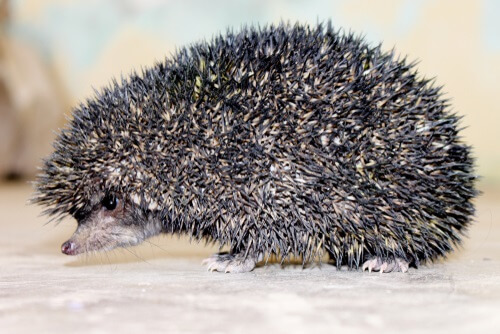
- Origin: Middle East, Central Asia
- Price: $150 to $300
- Size: Up to 10 inches
- Color: Brown
This hedgehog is native to the Middle East and parts of Central Asia where it lives in arid desert areas and mountainous regions. The name comes from Johann Friedrich von Brandt, the director of the Zoological Department at the St. Petersburg Academy of Sciences, who first discovered the species. Brandt’s hedgehog has several subspecies and is another fast runner.
10. Daurian Hedgehog (Mesechinus dauuricus)
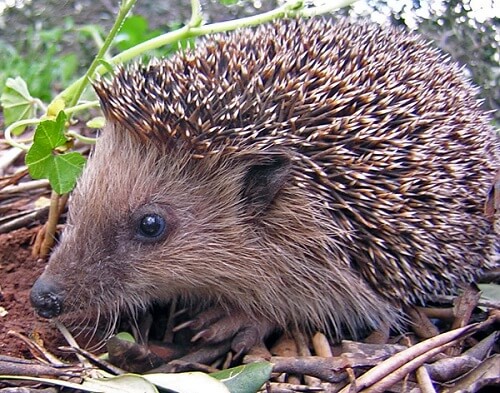
- Origin: Mongolia, Russia
- Price: $150 to $300
- Size: Up to 8 inches
- Color: Brown
Found in the Transbaikal region of Russia and northern Mongolia, the Daurian hedgehog is a smaller species that grows up to 8 inches long. This hedgehog typically choses rocky areas and scrubland for greater concealment from predators and it hibernates during the winter. This species lives up to 6 years in the wild but its population was hit hard in the 1960s with extensive pesticide use and its status is unknown but generally considered endangered.
11. Indian Long-Eared Hedgehog (Hemiechinus collaris)
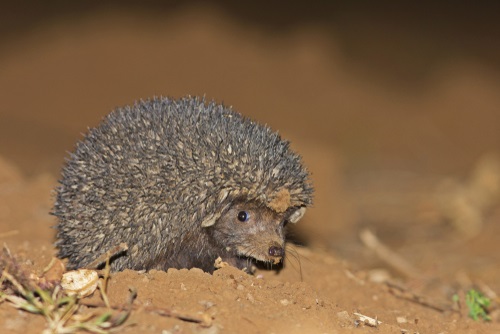
- Origin: India, Pakistan
- Price: $150 to $300
- Size: Up to 7 inches
- Color: Brown
A fairly small species of hedgehog, the Indian long-eared hedgehog is native to India and Pakistan. This hedgehog is an insectivorous species that is usually found living in burrows. It grows up to 7 inches long and has long ears that help with heat radiation in the desert.
Some of the other hedgehog species include:
- Hugh’s Hedgehog(Mesechinus hughi)
- Northern White-Breasted Hedgehog(Erinaceus roumanicus)
- Southern White-Breasted Hedgehog(Erinaceus concolor)
- Southern AfricanHedgehog (Atelerix frontalis)
- Bare-Bellied Hedgehog(Paraechinus nudiventris)
- Amur Hedgehog (Erinaceus amurensis)
The Benefits of Owning a Hedgehog
Every pet has its own unique benefits, but the hedgehog is different than any other pet you’ll come across. If you’re looking for a challenging pet that will keep you on your toes, it may be one to consider.
Here are some of the benefits of hedgehogs as pets:
- Hedgehogs are generally pretty clean pets, especially since their mess is going to be contained by their cage. Using the right bedding will help control odor and be sure to spot-clean daily with more comprehensive cage cleaning once a week or so.
- The hedgehog is a fairly small pet and doesn’t take up a lot of space, aside from the size of its cage of course. Hedgehogs need about 2 ½ to 4 square feet of space, though a bigger cage is always better if you can accommodate it.
- The hedgehog is a fairly inexpensive pet to keep compared to larger pets and comparable in price to other small pets. The biggest expenses will be your hedgehog’s cage and ongoing diet.
- Hedgehogs are solitary animals, so you don’t have to find room or time to care for more than one. They also don’t need a lot of social interaction, so they could be a good choice if you want the company of the pet but don’t want to do a lot of training or socialization.
- Though they may be covered in spikes, hedgehogs aren’t dangerous to handle. The spikes are surprisingly soft, and they aren’t barbed. Hedgehogs also don’t tend to bite.
As far as small pets go, hedgehogs are fairly simple to keep. The biggest concern is providing for your pet’s nutritional needs and giving him adequate means to exercise.
Read on to learn some other important tidbits you should know before getting a hedgehog.
What to Know Before Getting a Pet Hedgehog
Though there are seventeen different species of hedgehogs, most of the ones you see in pet shops are African pygmy hedgehogs. These are not a natural species but a hybrid of the white belly hedgehog or four-toed hedgehog and the North African hedgehog. Aside from species, the biggest difference between hedgehogs in the pet trade is coloration.
Here are some of the most common colors for African pygmy hedgehogs:
- Apricot
- Champagne
- White
- Black
- Snowflake
- Albino
- Salt & Pepper
- Cinnamon
Here are some other important things to consider for pet hedgehogs:
- Hedgehogs were originally classified as insectivores but are actually omnivorous. In the wild, they eat a variety of foods including slugs, snails, frogs, and vegetation, but pet hedgehogs in captivity may be fed a commercial diet as long as it meets their nutritional needs.
- The hedgehog is a surprisingly active pet that enjoys to run, so you’ll need to provide an exercise wheel. Make sure the wheel is appropriately sized for your hedgehog but not so big that it eats into the floor space available in the cage.
- Hedgehogs need about 2 ½ to 4 square feet of space so they can roam and the cage should offer warmth without sacrificing ventilation. If you choose a wire cage, be sure the spacing is small enough your pet’s feet won’t get stuck and make sure the floor of the cage is solid, not wire.
- Because hedgehogs are nocturnal, you should expect your pet to be most active at night. This means your pet may make some noise during the night, so keep that in mind when you’re deciding where to place the cage.
- The hedgehog is a solitary animal that should not be kept in the same cage as other pets. It also means that it may take some time for your hedgehog to get used to use and become tame.
If you’re looking for a small pet that doesn’t have complex requirements or take up a lot of space, the hedgehog is well worth considering.
Take what you’ve learned here to decide which type of pet hedgehog to get then check out our other guides to get started with your new pet!







